Introduction of taste and flavor characteristics of Kenyan AA coffee bean varieties
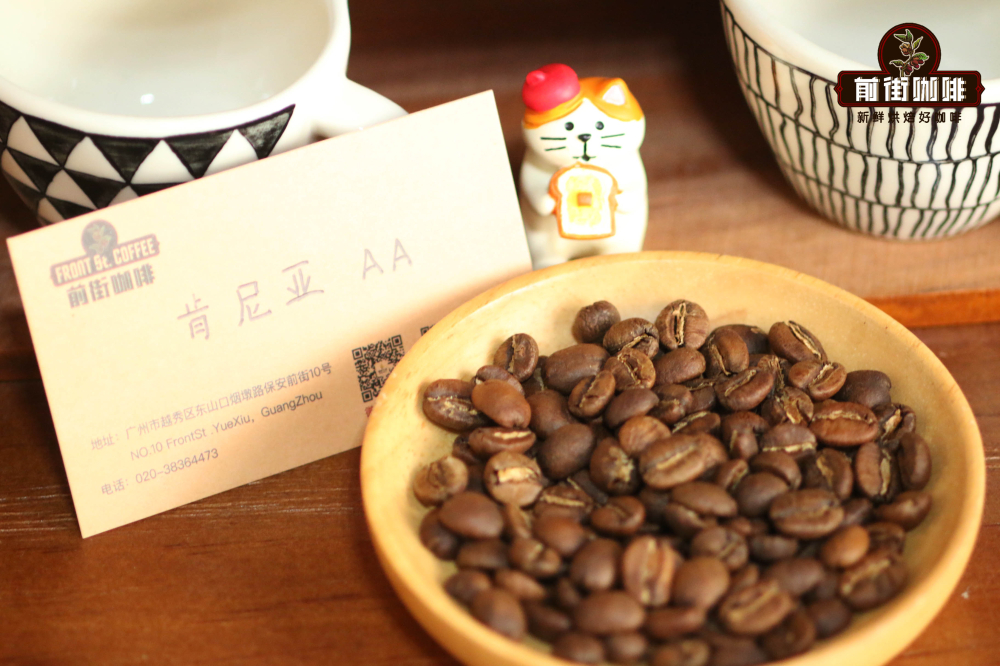
Kenyan coffee has been gaining the hearts of many coffee lovers with its rich acidity and mellow taste. When many friends come to the front street to drink coffee, want to drink sour but do not want to drink Ethiopian coffee beans, Kenyan coffee beans is a very good choice. When it comes to Kenyan coffee, you will think of Kenyan AA coffee beans. What is AA? In front of this article, let's talk about what Kenyan AA coffee beans are.
Coffee producing area
Located in eastern Africa, the equator runs through central China, and the Great Rift Valley stretches north and south. It is bordered by Somalia to the east, Tanzania to the south, Uganda to the west, Ethiopia and Sudan to the north, and the Indian Ocean to the southeast. There are many plateaus in the territory, with an average elevation of 1500 meters. The central peak of Kirinaga (Mount Kenya) is 5199 meters above sea level and the top of the mountain is covered with snow, making it the second highest peak in Africa. Kenyan coffee beans have wonderful and satisfying aromas, well-balanced acidity, well-proportioned granules and excellent fruit flavors. Qianjie compared the coffee beans of Kenya's neighboring Ethiopia, and found that although both are mainly sour, the feeling is completely different. The acid in Kenya is strong and thick, and the acid in Ethiopia is soft and bright. If you try African coffee beans for the first time, Qianjie suggests that you can try Ethiopian coffee beans first, and then slowly transition to Kenyan coffee beans.
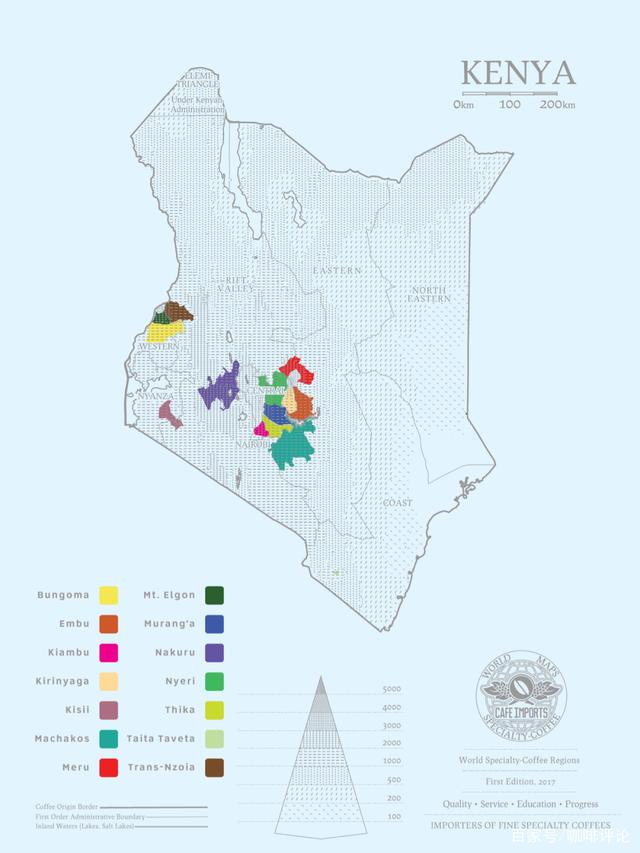
Kenya coffee producing areas are mainly distributed in the central and western regions, including Thika, Kirinyaga, and the west side of Mount Kenya (Mt. Kenya West, Nyeri, Kiambu, Muranga. The harvest periods of the six major producing areas are all from October to December (the main production season) and from June to August (the by-product season).
Among them, Sika and Kirin Yajia can best reflect the flavor of the African region.
Sika (Thika)
Sika is a small town in Nairobi, the capital of Kenya. There are many coffee fields around Nairobi, and Sika is an industrial town, but surrounded by agriculture and waterfalls. There are about 2000 farmers in Sika. The planting history of Kenyan Sika coffee can be traced back to the end of the 19th century. Coffee trees were introduced from neighboring Ethiopia in the north and improved by their own varieties. At present, the common varieties are Bourbon, Kents, SL34, SL28, Typica and Riuri 11. Now about 90% of the coffee varieties are SL34 and SL28. The new variety Batian published in 2007 has not been planted in large quantities. The flavor of the region has bright acidity, thick berry juice and honey sweetness. Altitude: 1550m-1750m, variety: sl-28,sl-34.
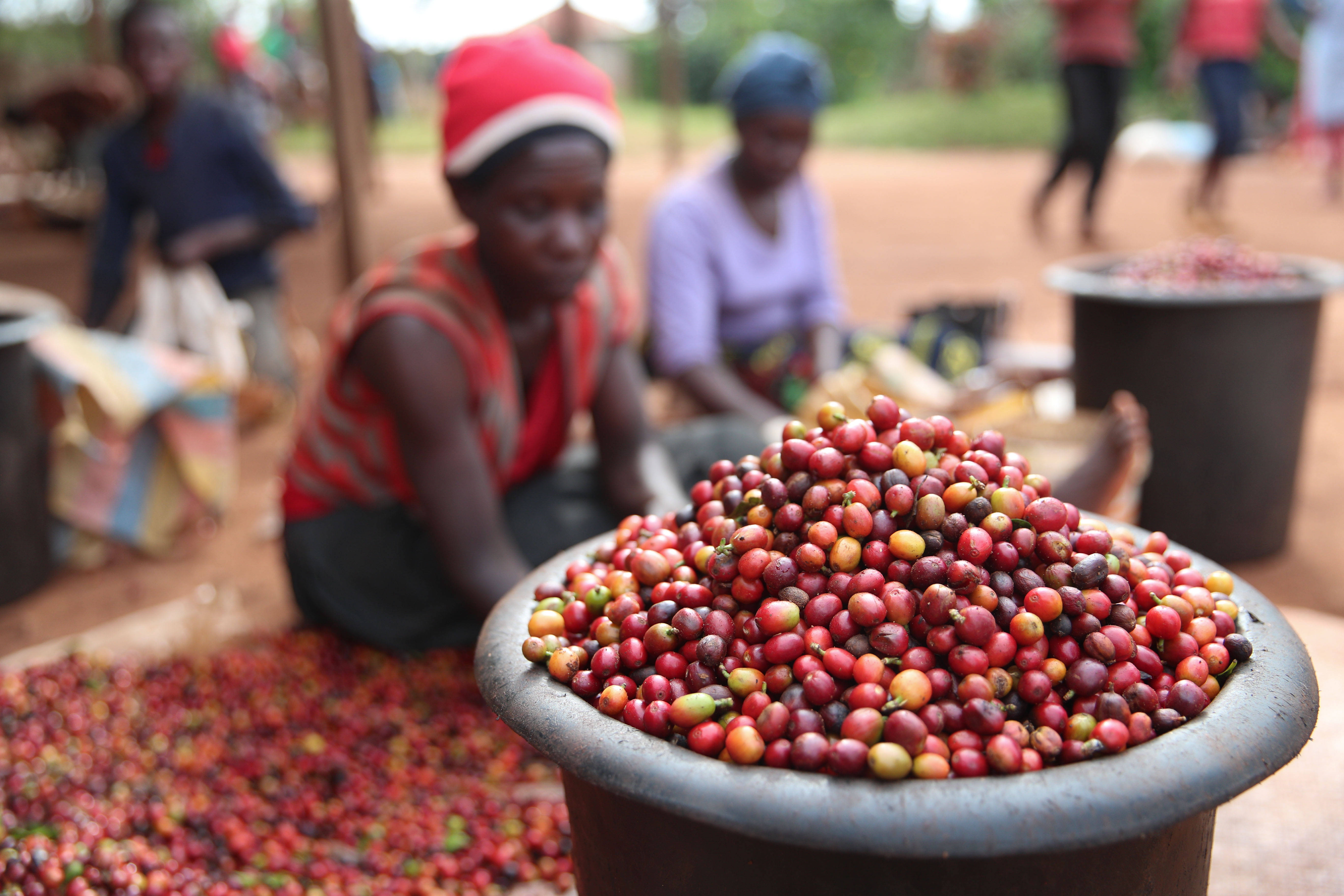
Kirinia (Kirinyaga)
Located on the hillside of Mount Kenya, near the Nyeri producing area, the Kirinia producing area is famous for its strong flavor, rich layers and solid taste of coffee. Together with the Nyeri producing area, it is recognized as the two best producing areas in Kenya. Most of the producers in this area are small coffee farmers who join the cooperatives, while the cooperatives play an integrated role, providing washing plants, and coffee farmers send the coffee fruits to the cooperative processing plants for processing. The flavor of this area has bright acidity, moderate grease and delicate sweetness. Altitude: 1300-1900m, varieties: SL-28, SL-34, Ruiru11, Batian.
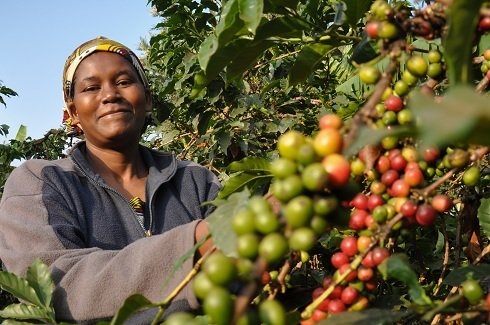
Nyeri (Neary)
Neri, located in central Kenya, is home to the extinct volcano Mount Kenya. The red soil in this area breeds the best coffee in Kenya. Agriculture is extremely important here; coffee is the most important crop. Common cooperatives made up of small farmers are more common than large manors. There are two harvests in this area, but coffee from the growing season is usually of high quality. With a bright berry juice, citrus and faint floral aromas, the coffee beans grown here make Kenyan coffee famous all over the world. Altitude: 1200-2300m, varieties: SL-28, SL-34, Ruriu11, Batian.
Coffee bean variety
Kenya only needs to grow Sl28,Sl34,Ruiru11. SL28 and SL34 are genetic variants. They account for the vast majority of Kenya's high-quality coffee production, but these varieties are susceptible to leaf rust. SL34 has French missionaries, bourbon, and more Tibica ancestry. Copper leaf color and broad bean-shaped beans have a great sense of sweetness, balance and complex flavor, as well as remarkable citrus and black plum characteristics.
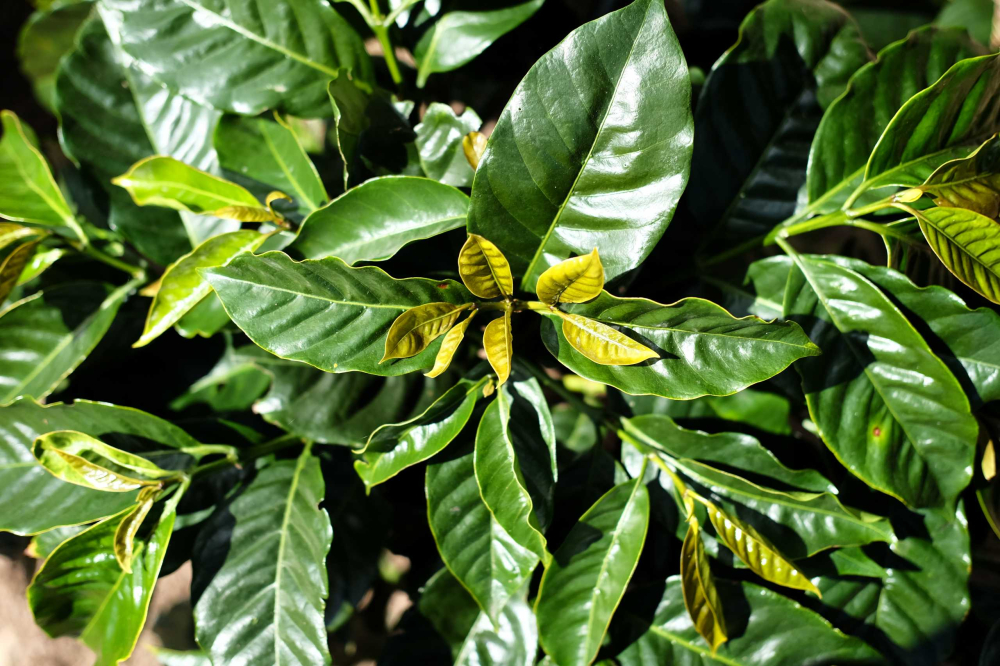
Ruiru 11: in 1985, with the outbreak of iron rust in the world, Kenya developed hybrid varieties with high yield and low quality, but the flavor quality was far lower than that of the previous sl28 sl34, and it did not develop in the boutique coffee industry. However, many even imported boutique coffee suppliers mix the hybrid beans with Blend to reduce costs.
Kenya aa coffee beans are mentioned above. In fact, aa is the grading of Kenyan coffee beans. Next, let's take a look at how Kenyan coffee beans are graded. Kenyan coffee grading is mainly based on coffee particle size, usually divided into eight grades.

AA grade with excellent quality (flavor, taste) in AA Plus (AA+) cup.
AA particles: size (Screen Size) 17-18 mesh.
AB particles: size (Screen Size) 15-16 mesh, accounting for the majority of output.
C particles: those whose size (Screen Size) is smaller than AB.
TT from AA and AB beans: lighter beans blown out with an airflow filter.
T from Class C beans: lighter beans blown out with an airflow filter.
E Elephant Bean: two beans into one of the large mutant beans, also known as elephant ear bean Elephant ear.
PB Peaberry: classified by appearance, independent of flavor weight. Coffee bean treatment
The biggest difference between Kenyan water washing and Central and South America is that Kenya water washing treatment uses double fermentation, which is our common K72 water washing treatment. After the coffee was harvested, the best quality coffee berries were selected for peeling and fermentation. the fermentation time was 24 hours, and then washed with clean water after 24 hours.
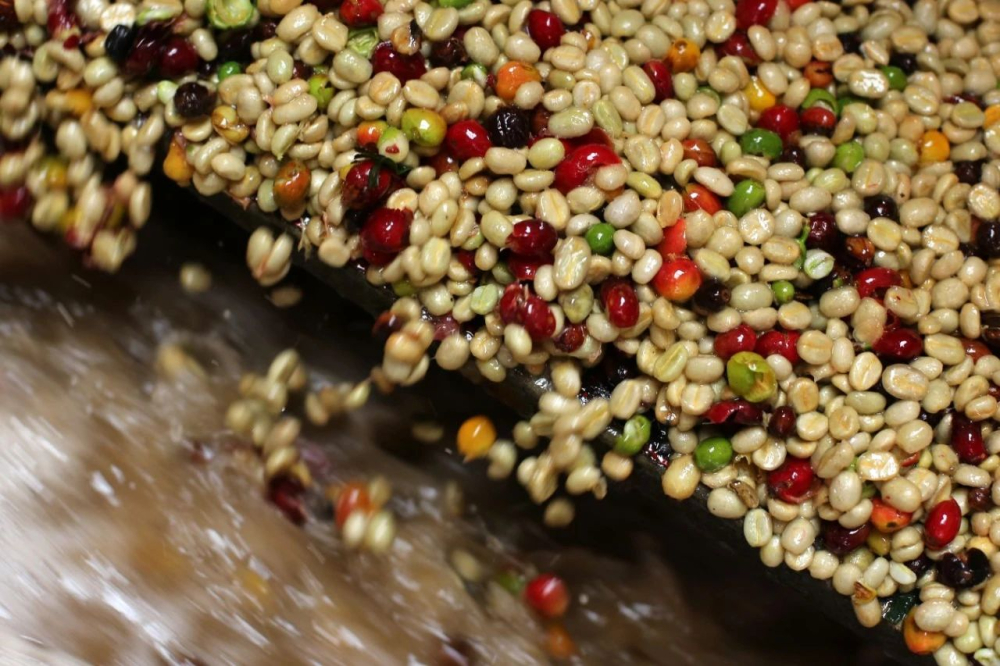
Then, it is fermented for 24 hours with clean water, then washed, and repeated for 3 times to reach 72 hours, so it is called Kenyan 72-hour fermentation water washing treatment, referred to as [K72]. Qianjie Coffee believes that K72 water washing will improve the acidity and cleanliness of coffee beans compared with conventional water washing.
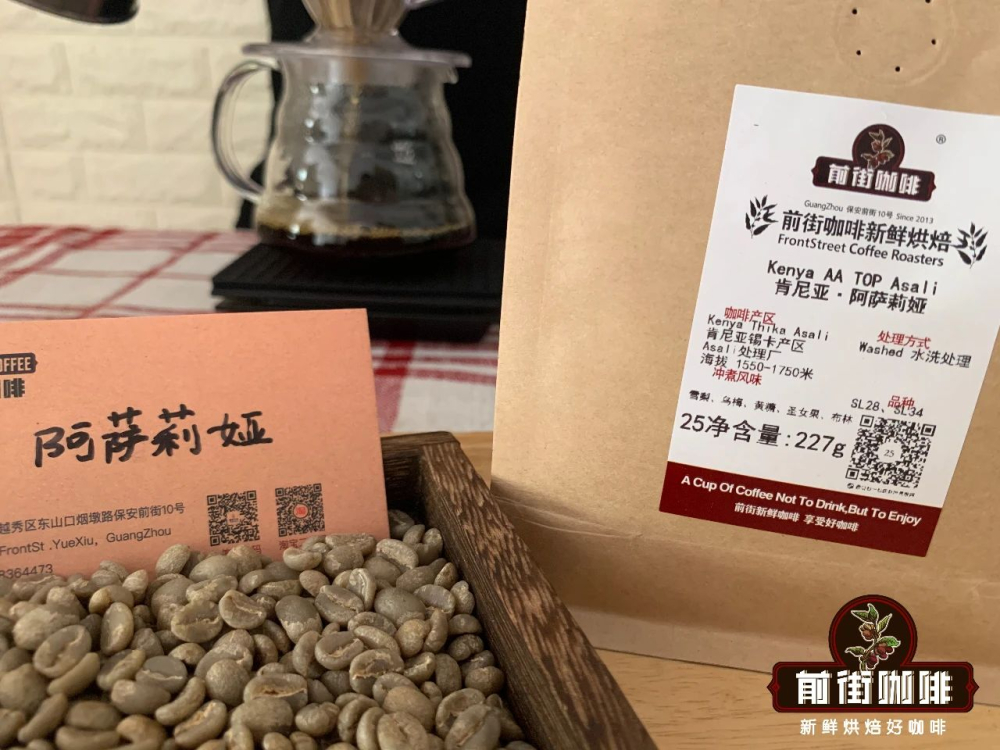
Front Street Coffee: Kenya Asalia Coffee beans
Producing area: Sika Thika, Kenya
Processing plant: Asali honey processing plant
Altitude: 1550-1750 m
Rating: AA TOP
Variety: SL28,SL34
Treatment: 72-hour washing in Kenya
Qianjie baking suggestion
Qianjie Coffee roasted this Kenyan coffee bean with medium and light roasting to highlight its rich fruit acidity and full berry juice taste.
Yangjia 800N: furnace temperature to 200 ℃ Celsius into the pot, throttle open 3, firepower is 160; tempering point 1 temperature: 39 ℃, firepower drops to 130, throttle opens to 3.5; at this time the bean surface turns yellow, the smell of grass disappears completely, enters the dehydration stage, firepower drops to 80 at 171℃, the throttle remains unchanged.
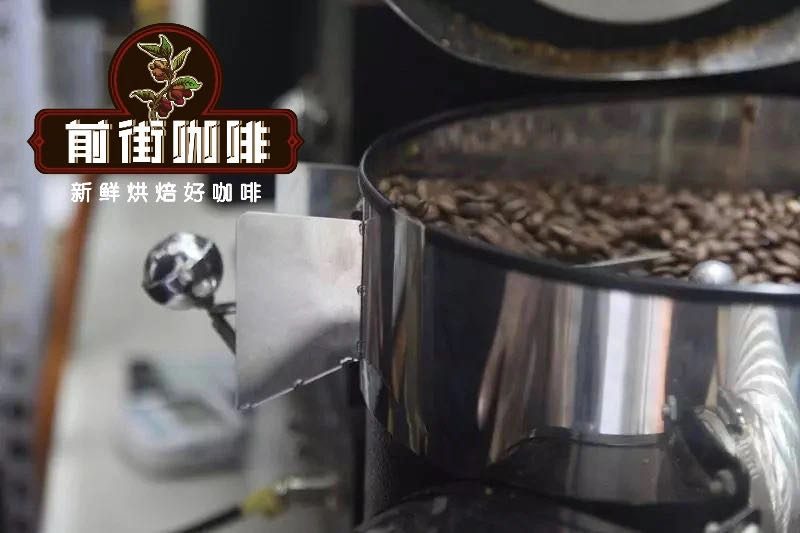
The smell of toasted bread has obviously changed to the smell of coffee, which can be defined as a prelude to an explosion. At this time, it is necessary to listen carefully to the sound of the explosion point. At this time, the sound of the explosion point should be heard clearly. The throttle should be adjusted to 5. After the explosion, it will be developed into a 2-cup-39-switch 10 ", 191.6 ℃ pot.
Qianjie Cup test report
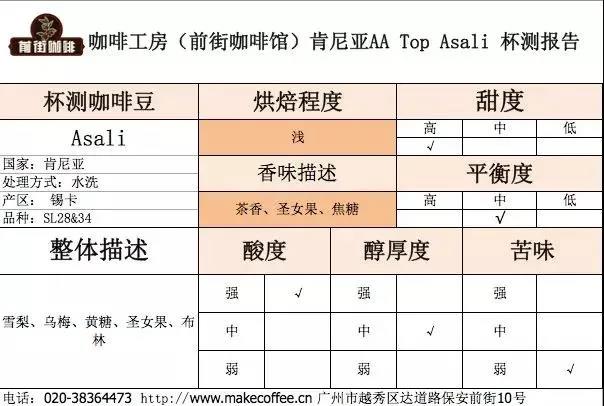
Qianjie cuisine recommendation
Qianjie Coffee takes into account that this bean uses a medium-shallow baking method, and will use a filter cup with higher water temperature and faster flow rate, mainly because it is extracted from its bright acidity with high temperature, but it does not want to be over-extracted because of high temperature. so choose the V60 filter cup with faster flow rate.
Powder / water ratio: 1:15
Powder content: 15g
Water temperature: 90 ℃ ~ 91 ℃
Degree of grinding: fine granulated sugar size (20 standard screen pass rate 80%)

In the first stage, 30 grams of water is injected for 30 seconds, followed by 105 grams (about 135 grams shown by the electronic scale). The injection is completed in about 1 minute, and the remaining 120 grams are injected at 3 places in the powder layer (about 255 grams shown by the electronic scale) in about 1 minute and 45 seconds. 2 the filtration is completed, remove the filter cup and complete the extraction.

Cooking flavor: the mouth has the flavor of black plum and virgin fruit, the taste is strong sour, thick, middle sweet, juicy, aftertaste berry and yellow sugar sweet, and green tea aroma.
Professional coffee knowledge exchange more coffee bean information please follow the coffee workshop (Wechat official account cafe_style)
For more boutique coffee beans, please add private Qianjie coffee on Wechat. WeChat account: qjcoffeex
Important Notice :
前街咖啡 FrontStreet Coffee has moved to new addredd:
FrontStreet Coffee Address: 315,Donghua East Road,GuangZhou
Tel:020 38364473
- Prev

Columbia Coffee Manor Flavor description characteristics Taste treatment Grinding scale
Columbia Coffee Manor Flavor description Taste treatment ground authentic Colombian coffee, the color is as clear and transparent as emerald. It is like the masterpiece of the greatest tune, which matches sour, bitter and sweet just right. After drinking, the fragrance fills the whole mouth. The aroma comes out of the nose again. It is so soft and arrogant, with the most
- Next
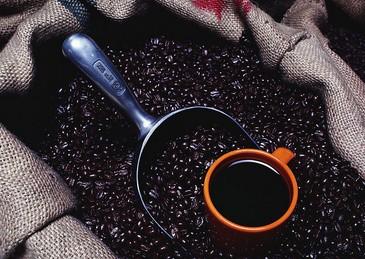
The Variety characteristics and Flavor description of Yejia Shifeiwaka Coffee Grinding scale production area
Yega Chuefeiwaka Coffee Variety characteristics, Flavor description, Grinding scale production area Yega Chevoca refers to strong aromas of jasmine, lemon or green citric acid, as well as peach, almond and tea. The author's tasting experience has only one sentence: coffee entrance, flowers in full bloom! Except for the comfort of the taste buds touched by flowers and the olfactory cells of the nasal cavity, Yejasuffe itself is about
Related
- Detailed explanation of Jadeite planting Land in Panamanian Jadeite Manor introduction to the grading system of Jadeite competitive bidding, Red bid, Green bid and Rose Summer
- Story of Coffee planting in Brenka region of Costa Rica Stonehenge Manor anaerobic heavy honey treatment of flavor mouth
- What's on the barrel of Blue Mountain Coffee beans?
- Can American coffee also pull flowers? How to use hot American style to pull out a good-looking pattern?
- Can you make a cold extract with coffee beans? What is the right proportion for cold-extracted coffee formula?
- Indonesian PWN Gold Mandrine Coffee Origin Features Flavor How to Chong? Mandolin coffee is American.
- A brief introduction to the flavor characteristics of Brazilian yellow bourbon coffee beans
- What is the effect of different water quality on the flavor of cold-extracted coffee? What kind of water is best for brewing coffee?
- Why do you think of Rose Summer whenever you mention Panamanian coffee?
- Introduction to the characteristics of authentic blue mountain coffee bean producing areas? What is the CIB Coffee Authority in Jamaica?

